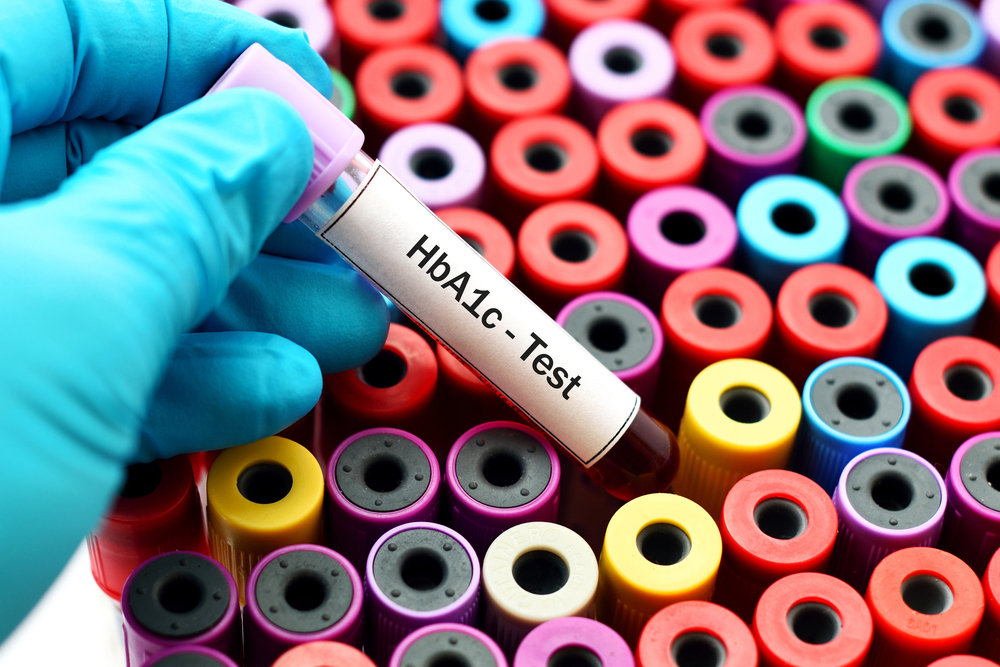How is Type 2 Diabetes Diagnosed?

According to the NCBI, by the end of 2045, India will have over 134 million individuals suffering from diabetes.
This alarming statistic has created a need for a deeper understanding of the condition and the implementation of effective diabetes management strategies. A critical step for managing type 2 diabetes is its timely diagnosis, which will help monitor blood sugar levels and initiate appropriate interventions.
Diabetes is a condition that affects how the body processes glucose. There are two types of diabetes: type 1 and type 2. Type 1 diabetes is an autoimmune disorder where the body produces no insulin to regulate blood sugar levels. Type 2 diabetes is a metabolic condition wherein the body develops insulin resistance, causing high blood sugar levels.
Type 2 diabetes is diagnosed with the help of different glucose blood tests. This blog will help you comprehensively understand the diverse tests for detecting and diagnosing type 2 diabetes.
What is Type 2 diabetes?
In type 2 diabetes, the body develops insulin resistance, which results in elevated blood sugar levels as the body cannot effectively process glucose. Various factors, such as family history, an unhealthy lifestyle, and excessive consumption of processed foods and beverages, are responsible for causing type 2 diabetes. It is a severe condition that can adversely affect our heart, brain, neurological functions, and even our eyes.
It is vital to get a diabetes blood test done if the following symptoms are prevalent:
- Frequent urination
- Unexplainable weight-loss
- Increased thirst or hunger
- Dark patches on the skin
- Blurry vision
- Slow healing of wounds and cuts
Blood Sugar Tests for Diabetes
A blood sugar test is a procedure to check blood sugar levels, which can be indicative of diabetes.
Here are the types of blood sugar tests conducted to diagnose type 2 diabetes:
1. Fasting Blood Sugar Test
A fasting blood sugar test is conducted to check how well the body processes glucose without any influence from food. Here is how this test is performed:
- Before the test: To check the fasting blood sugar level, you should go to your healthcare provider after not eating or drinking anything except water for 8 to 12 hours. The ideal time for this test is right after you wake up.
- During the test: Your healthcare provider will take your blood sample and send it to the lab for testing.
- After the test: After collecting the blood sample, you may resume eating and drinking normally.
You will get your results within 24 hours. Below is the fasting sugar normal range:
| Diabetes Stage | Blood Sugar Level |
| Normal Blood Sugar | Below 100mg/dL |
| Prediabetes | 100-125 mg/dL |
| Diabetes | 126 mg/dL or above |
2. Postprandial Blood Sugar Test
Unlike a fasting blood sugar test, the postprandial test checks the glucose level after a meal. Here is how a postprandial blood sugar test is performed:
- Before the Test: The postprandial test is conducted two hours after eating a low-carb meal. Before the test, avoid consuming foods and beverages that are high in sugar, as this can interfere with the accuracy of the results.
- During the test: Your healthcare provider will take a blood sample and send it to the lab for assessment.
- After the test: Your test results will be available within a few days. The normal blood sugar range for this test is listed below:
| Diabetes Stage | Blood Sugar Level |
| Normal Blood Sugar | Below 140 mg/dL |
| Prediabetes | 140-199 mg/dL |
| Diabetes | 200 mg/dL or above |
3. Random Blood Sugar Test
Random blood sugar tests can be conducted at any time of day, regardless of whether you have eaten. Here is how this test is performed:
- Before the Test: There are no specifications on eating or drinking for this test. However, it is advised that you avoid foods or beverages containing excessive amounts of sugar.
- During the Test: Your healthcare provider will take a blood sample and send it to a lab for testing.
- After the Test: After sending the blood sample for assessment, you will receive your reports within one or two days. The normal blood sugar range for a random blood sugar test is below 200 mg/dL.
4. Oral glucose tolerance test
The oral glucose tolerance test shows how effectively your body processes glucose before and after eating. This test combines fasting and postprandial blood sugar tests and helps you gain a detailed insight into how your body tolerates glucose. Here is how an oral glucose tolerance test is conducted:
- Before the Test: For this test, you must visit your healthcare provider after fasting for 8–12 hours.
- During the Test: your healthcare provider will take your blood sample and send it to the lab. Then, you will be asked to consume a sugary beverage. After waiting two hours, your healthcare provider will collect another blood sample for testing.
- After the Test: Your test results will be available within a few days. The normal blood sugar range for this test is listed below:
| Diabetes Stage | Blood Sugar Level |
| Normal Blood Sugar | Below 140 mg/dL |
| Prediabetes | 140-199 mg/dL |
| Diabetes | 200 mg/dL or above |
5. HbA1C Test
A haemoglobin A1C test determines your average blood glucose level over two to three months. The detailed procedure for this test is below:
- Before the Test: No preparations are required before an HbA1C test.
- During the Test: Your healthcare provider will collect a blood sample to send to the lab for testing.
- After the Test: Here is the normal blood sugar range for this test.
| Diabetes Stage | Blood Sugar Level |
| Normal Blood Sugar | Below 5.7% |
| Prediabetes | 5.7% to 6.4% |
| Diabetes | 6.5% and above |
The escalating number of type 2 diabetes cases in India is a serious health challenge that must be addressed. Diabetes may not be cured, but it is manageable with proper healthcare measures. These include monitoring blood sugar levels with the help of the mentioned diabetes tests and maintaining a healthy lifestyle by exercising regularly and consuming a nutrient-rich diet.














